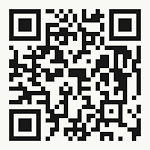| Examples of tokens discovered at Ziyaret Tepe are displayed |
An archaeological dig in southeast Turkey has uncovered a large number of clay tokens that were used as records of trade until the advent of writing, or so it had been believed.
But the new find of tokens dates from a time when writing was commonplace – thousands of years after it was previously assumed this technology had become obsolete. Researchers compare it to the continued use of pens in the age of the word processor.
The tokens – small clay pieces in a range of simple shapes – are thought to have been used as a rudimentary bookkeeping system in prehistoric times.
One theory is that different types of tokens represented units of various commodities such as livestock and grain. These would be exchanged and later sealed in more clay as a permanent record of the trade – essentially, the world's first contract.
The system was used in the period leading up to around 3000 BC, at which point clay tablets filled with pictorial symbols drawn using triangular-tipped reeds begin to emerge: the birth of writing, and consequently history.
From this point on in the archaeological record, the tokens dwindle and then disappear, leading to the assumption that writing quickly supplanted the token system.
However, recent excavations at Ziyaret Tepe – the site of the ancient city Tušhan, a provincial capital of the Neo-Assyrian Empire – have unearthed a large quantity of tokens dating to the first millennium BC: two thousand years after 'cuneiform' – the earliest form of writing – emerged on clay tablets.
"Complex writing didn't stop the use of the abacus, just as the digital age hasn't wiped out pencils and pens," said Dr John MacGinnis from Cambridge's MacDonald Institute for Archaeological Research, who led the research.
"In fact, in a literate society there are multiple channels of recording information that can be complementary to each other. In this case both prehistoric clay tokens and cuneiform writing used together."
The tokens were discovered in the main administrative building in Tušhan's lower town, along with many cuneiform clay tablets as well as weights and clay sealings. Over 300 tokens were found in two rooms near the back of the building that MacGinnis describes as having the character of a 'delivery area', perhaps an ancient loading bay.
For more link me

0 comments:
Post a Comment